-
Posts
574 -
Joined
-
Last visited
-
Days Won
2
Content Type
Profiles
Forums
Blogs
Gallery
Events
Store
Posts posted by Trooper_D
-
-
Thank you for your kind words, Dom. It sounds as if you have a lot on your plate at the moment (9" and 8"? Yikes!) so stay safe - and warm!
0 -
Dom
In the second post in this thread, I pointed you to a post you had made in the Great War Forum. I assumed that you would have read the next post in that thread, which answered your question. In it, the poster said that the war diary entry for 30 Sept 1918 noted that "Lt Raymond US Medical Corps is attached for duty". Here is that entry, from the war diary I downloaded using the link in the post from Great War Forums I have quoted above,
We know from earlier posts in this thread that he was attached to a hospital when he first join the British forces in Feb 1917. He then went to join the US forces in March 1918.
As for why he was awarded the MC, why do we need to look beyond what was said in the document, that it was awarded for 'meritorious service'? In effect, it was a thank you for serving with British forces twice, the first time before the USA's entry into the war. If it had be for an act of bravery, I am sure it would have stated such on the
The real question here, I believe, is why he was attached to a British front line unit rather than continuing to serve in an orthopaedic hospital as he had been previously.
0 -
The regulation you are quoting is the first one, which created the Military Cross on 28 December 1914,
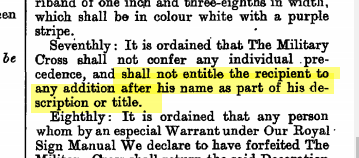
source: https://www.thegazette.co.uk/London/issue/29024/supplement/7
In 1916, and again in 1920, the regulations explicitly state that an officer can add MC after his name, as the extracts below show,
source: https://digital.nls.uk/british-military-lists/archive/88424036 and following page
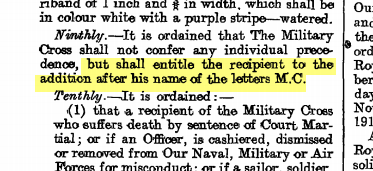
source: https://www.thegazette.co.uk/London/issue/32130/supplement/11306
1 -
Update: I made the post below before I read your latest post, Dom (it seems as if you got in just before me!), so it is now largely irrelevant but may be of some interest. Anyway, I am pleased that you now have an answer to the mystery which was bugging you!
---
Some further thoughts. From the following Gazette entries, it would appear that Raymond left the British Army to serve with the US forces sometime in March 1918. The biog indicates that, after the war, he served again with the British Army and this, presumably, was why he received the honorary rank of Lieutenant on 27 March 1919. What is striking is that there is no mention of the MC we believe he was awarded even though the officer three places above him in the second announcement is shown to have been awarded one. Does this mean he was awarded it after March 1919?
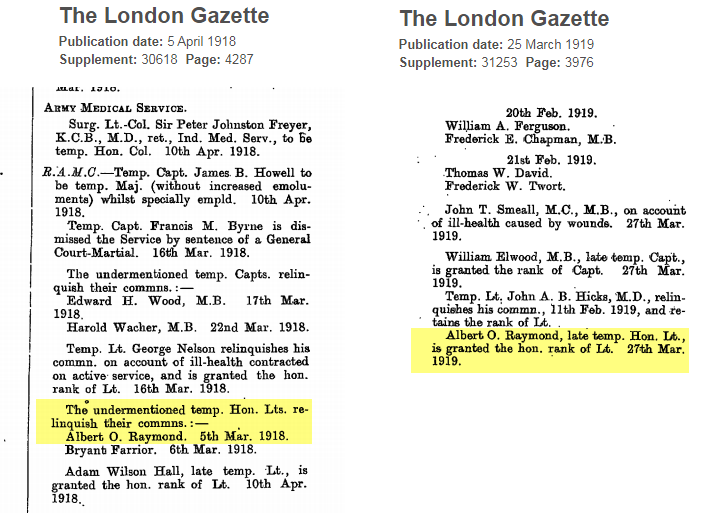
The second thought is that the criteria for the awarding of the Military Cross officially changed on 22 Nov 1920 from "distinguished and meritorious services in time of War" to "gallant and distinguished services in action". This suggests that, regardless of when it was announced, he was awarded it for his first stint in the British Army, ending in March 1918.
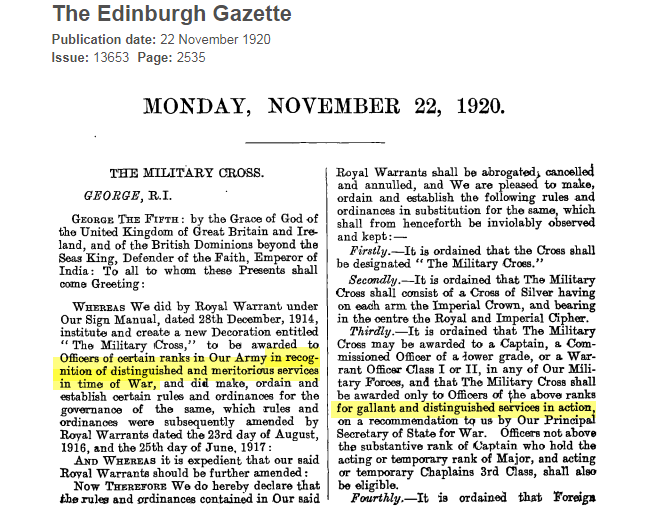 1
1 -
A further piece of evidence: an extract from his passport application made in Feb 1917 so that he could sail to the UK to serve in a military hospital (again from familysearch.org where the complete application can be found; link below).
Source: https://www.familysearch.org/ark:/61903/3:1:3QS7-89X7-F9CT-2
0 -
Thank you, Utgardloki, for your very interesting post on the different German scripts we might encounter in our researches. It has cleared up a number of issues in my own mind.
1 -
I think you will find this short biog which I found on familysearch.org (link below) of interest as it gives more of his military service. It appears to come from something called the 'United States Deceased Physician File (AMA), 1864-1968' published by the American Medical Association, Chicago.
Source: https://www.familysearch.org/ark:/61903/3:1:3QS7-L9QP-KX83
0 -
A couple of posts from 20 Dec 2019 on the GWF might help you

[Spoiler alert: it was the 7th Battalion, South Staffordshire Regiment]
https://www.greatwarforum.org/topic/39285-south-staffordshire-regt-war-diaries/page/11/
Other than that, he is rather elusive. I did find this in the LG but I suspect that you have already seen it.
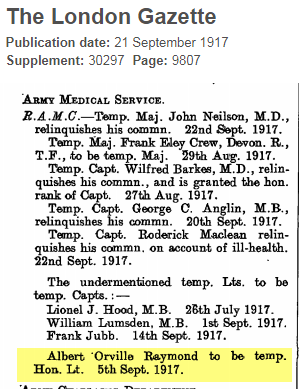
The only other thing which I found was that he graduated from Tufts on 17 June 1914 as a Doctor of Medicine.
0 -
Yes, that seems a fair assessment. I hope you are successful finding the rest of the kit you are looking for.
0 -
48 minutes ago, Chris Boonzaier said:
OK, the compass is in there, but I think the dividers would be better... a logical addition?
I would agree that dividers - for working out distances on a map - would be more logical (would he have any use for compasses?).
I wonder if something a bit more robust might be more appropriate for the field. The following dividers are to be had on the 'Bay, at the moment, for example (I have no interest in any of these),
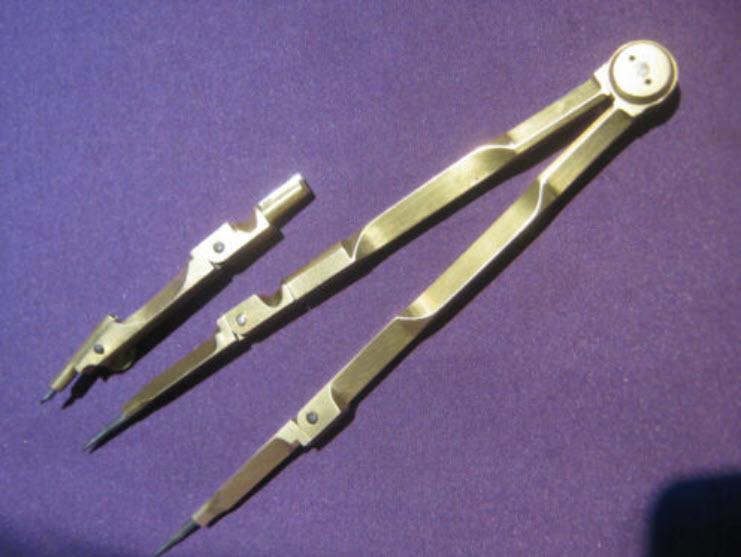
MOD 1915 - bit expensive (265022861032)
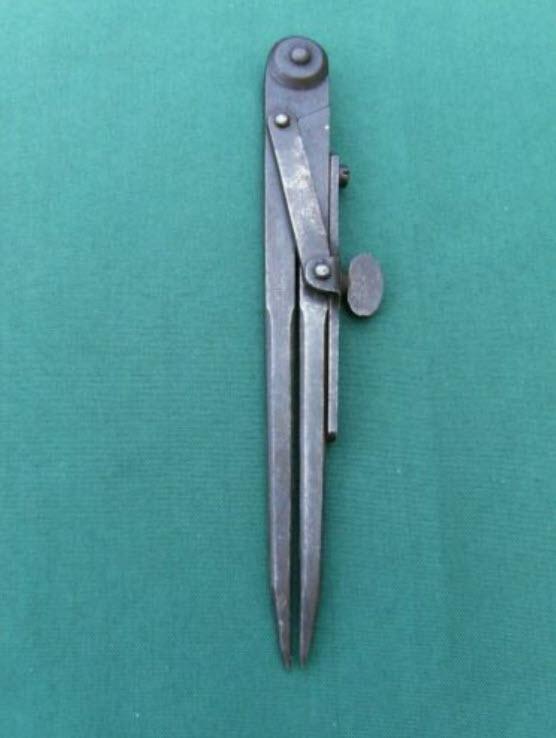
French, looks period but, at 19cm, may be too long - cheaper (254841888267)
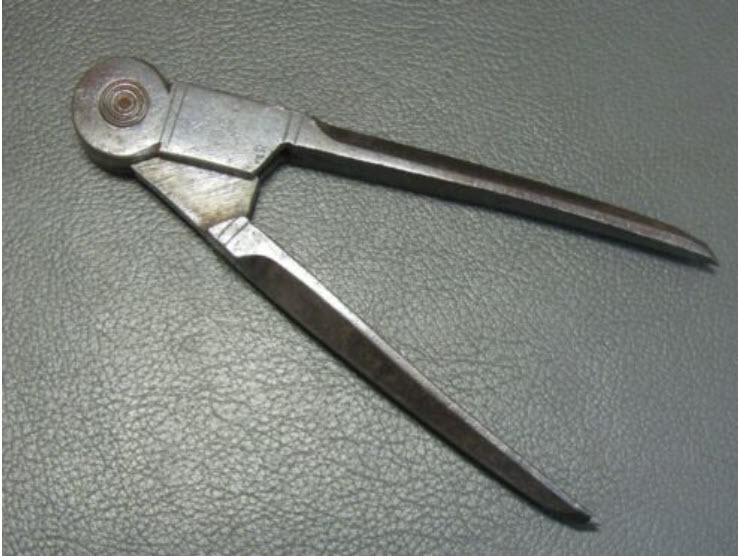
Looks period but unmarked - cheapest (154238718573)
I'm sure there must be more out there.
Edited to add: looking again at where it is to go, you are a bit restricted on the length, aren't you.
0 -
I am enjoying these highly evocative dioramas. I hope you will keep posting updates.
0 -
So the grenade is real? ?
0 -
What a great item, Chris. I hope you manage to track down all the accessories. Is there a list of the standard contents of such a case in a manual, somewhere, that you can follow or do you have to work in out for yourself from the shape of the various containers?
0 -
23 hours ago, Chris Boonzaier said:
And what, pray, is that urchin doing lurking in the background? Up to no good, I'll be bound. Security obviously wasn't a thing, in those days.
Ah, unless it is the real prince who has swapped places with his doppelgänger the bootboy for the day, for a lark! (Full disclosure: I think I might have stolen that idea from a book I read as a child!)
0 -
Sumptuous! The only thing to say for missing this first time round is that a pleasure delayed is a pleasure enhanced ?
0 -
3 hours ago, Glenn J said:
The following military attachés to the German Empire were listed in the 1912 edition of the "Gothaischer genealogischer Hofkalender nebst diplomatisch-statistichem Jahrbuch".
Many thanks for pointing us to this resource, Glenn, which I personally was not aware of. I discover that archive.org has a number of volumes - but not 1912, it appears. It does have 1917, though, which might be useful for someone,
https://archive.org/details/gothaischerhofka1917gothuoft/page/n6/mode/1up
0 -
What a great buy you've got there, Wyomingguy!
To add to what Glenn has said, I would bet that the American officer is Capt. Samuel G. Shartle, an artilleryman who was US Military Attache to Berlin at the time. Ulsterman made a good post about him on this very Site,
Further down in that thread, Ulsterman shows the back of a postcard he found on the Internet written by Shartle to his wife and sent on 9 Sept 1910, which shows a number of signatures of fellow military attaches. It is worth visiting the blog post the image came from because most of these names have been deciphered, including that of Pellé, who Glenn identified!
http://postcardparadise.blogspot.com/2011/02/kaisers-military-manoeuvres-elbing.html
I imagine that, with a bit of research into the other names, you should be able to identify all the photos.
0 -
35 minutes ago, GdC26 said:
Welcome to the club, Stephan, and thank you for your contributions sofar, of which I hope to see many more.
23 minutes ago, laurentius said:I agree, we should be happy to be joined by a knowledgeable collector, especially since the fora become less and less active.
I concur with both these sentiments.
1 -
3 hours ago, VtwinVince said:
I would be interested to know if you are running a publishing house. Also, how long have you been collecting, as you've seemingly come out of nowhere recently with all these spectacular items.
and
1 hour ago, David M said:I am very curious where you came from all of a sudden as well.
In such matters, Google is often your friend. This is what it revealed,
https://tallinnmuseum.com/2020/07/03/the-unrealized-order-of-the-duchy-of-brunswick/
0 -
7 minutes ago, dedehansen said:
I would read the dediction as 1923.
At the original resolution, I can see why you would think that, Andreas. However, when blown up, I think that it is 1933, which fits in with M. Valot's dates of service, of course.
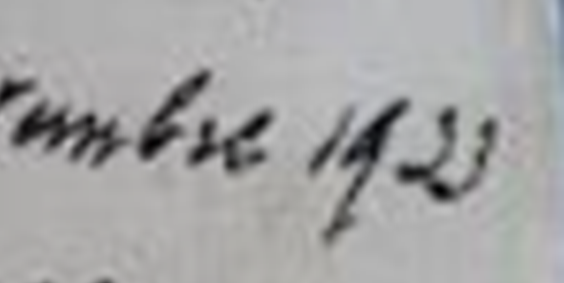 0
0 -
2 hours ago, Stuka f said:
That is a chasseurs of the Papual zouaves.
A variation I wasn't aware of. Thank you, Stuka.
0 -
-
From what I can see from the pdfs linked to above, these books look to be of excellent quality, Stephan. btw the third link is a repeat of the second. Might you be able to put up the correct link to the third book, please?
0 -
3 hours ago, paul wood said:
and had four brief visits to the grim reaper, alas for him he hated my taste in music so I am still this side of the veil.
A surprise. I'd have thought that Heavy Metal would have been right up his street

However, long may he remain tone deaf!
0



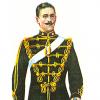
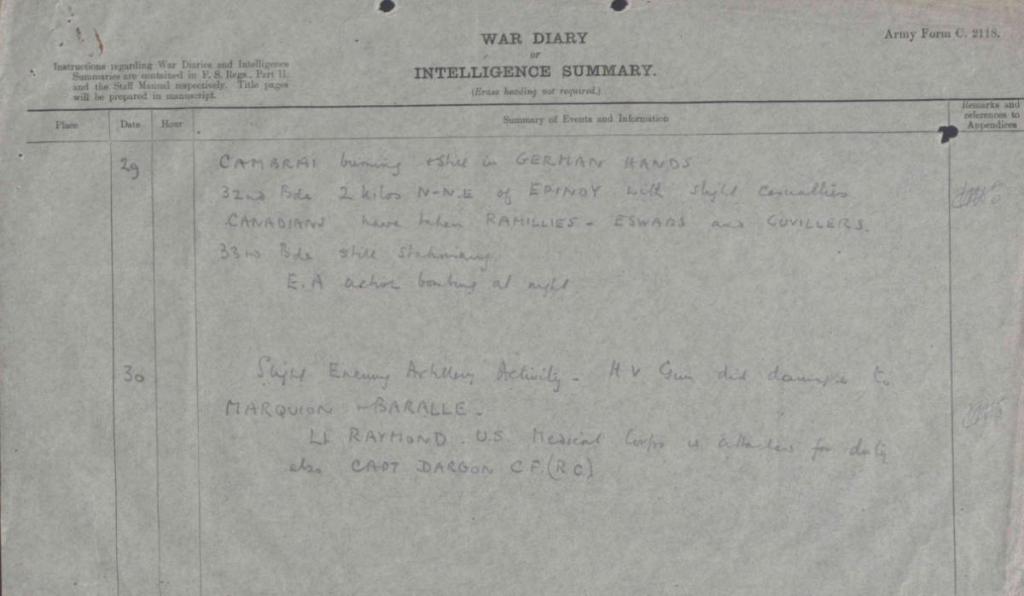

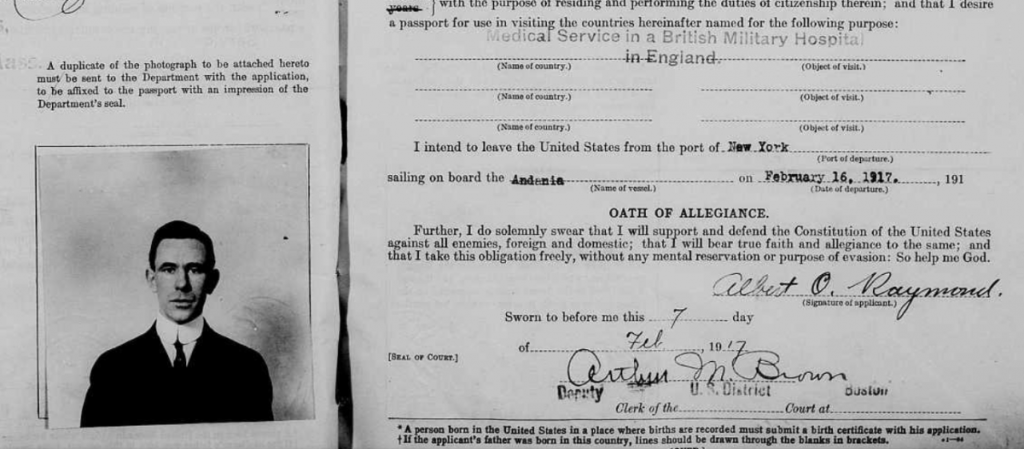
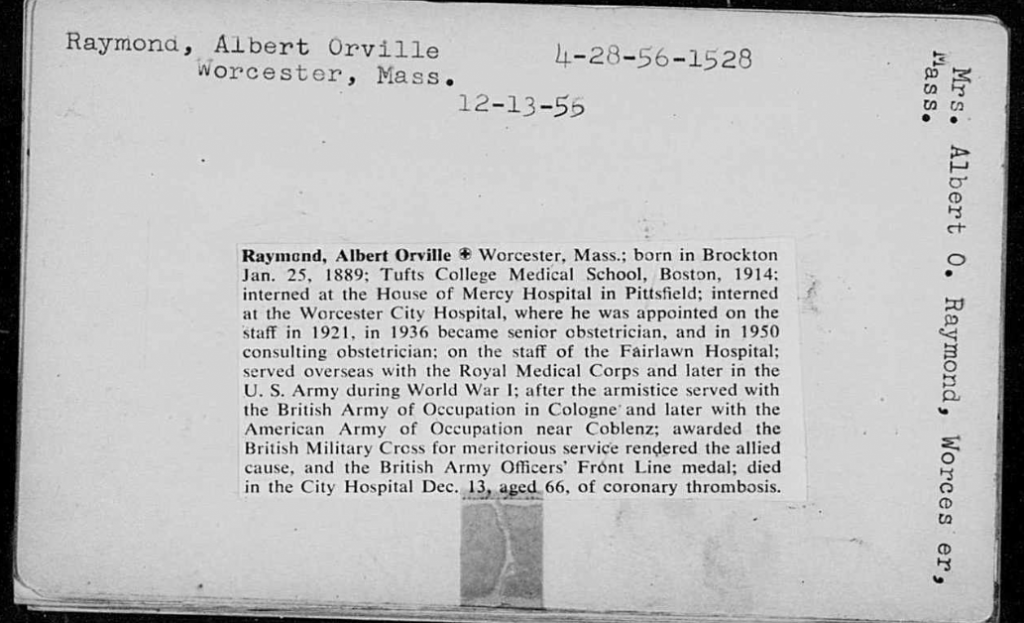
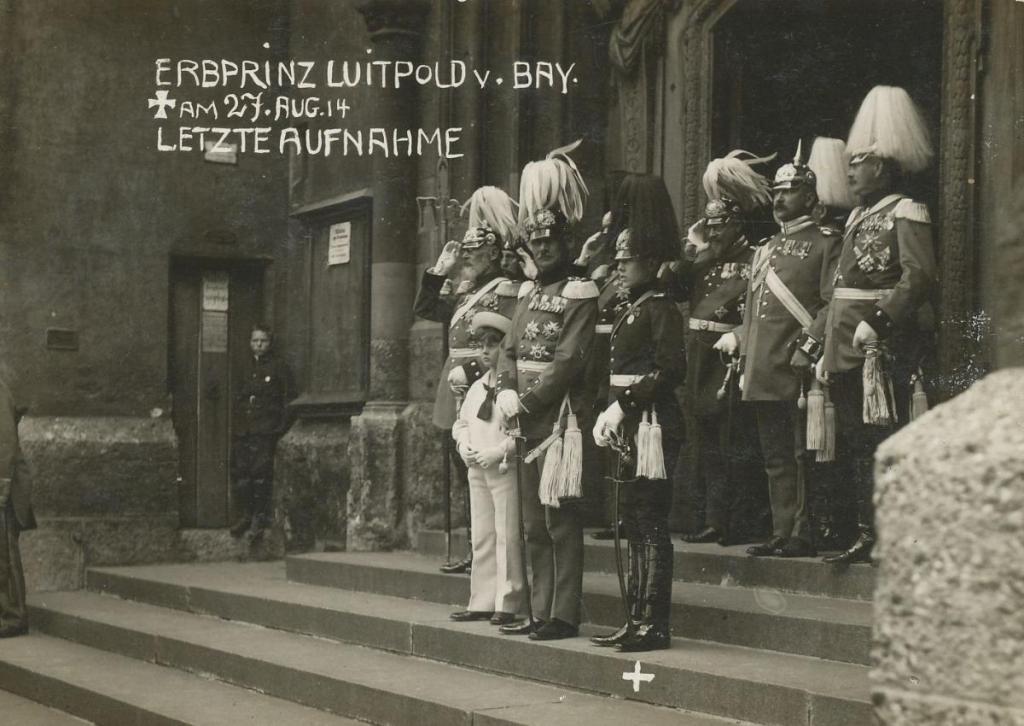
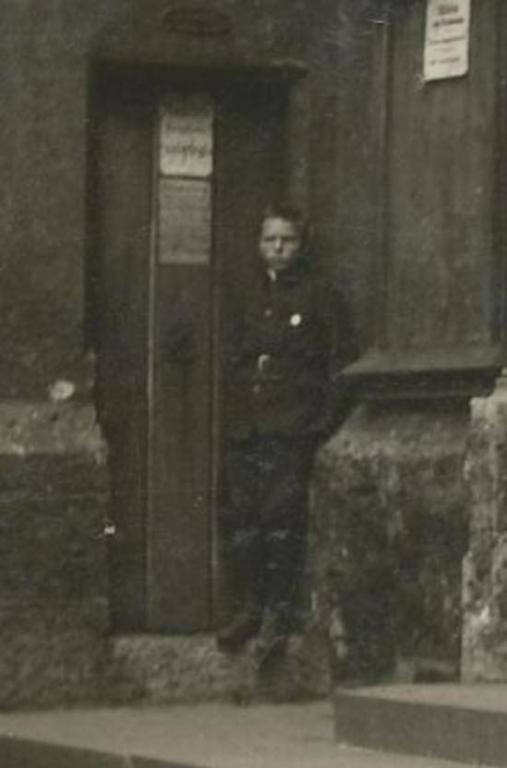
British P1912 Cavalry Officer's Sword
in Swords & Edged Weapons
Posted · Edited by Trooper_D
Thank you for this interesting account. One correction, if I may. The Agnes Fyfe Hunter you have identified is, I believe, actually the aunt of his wife - not his wife (if she was, she would have been 58 when she had their daughter). Furthermore, they married in 1920 not 1926. It was the 'aunt' who died in 1946 not the wife (who died in 1968).
The actual dates can be gleaned from the following extract of the marriage register (rather than post the whole sheet, I have posted the extract below and put the date in blue) and the probate register,
None of this detracts from a great piece of research!